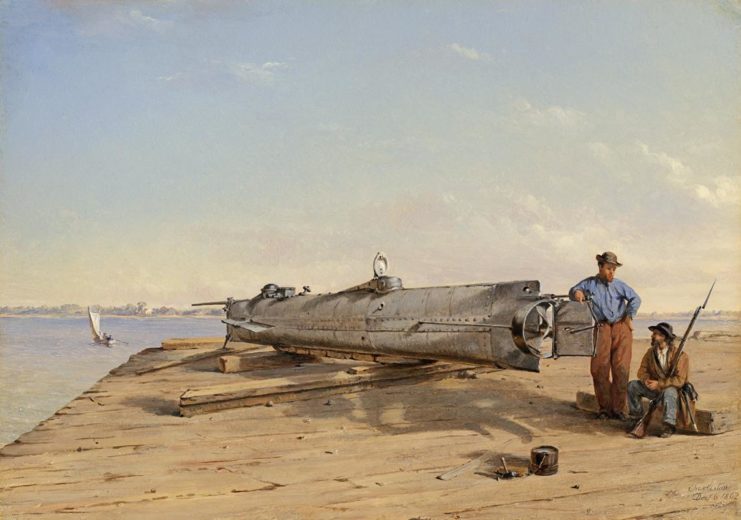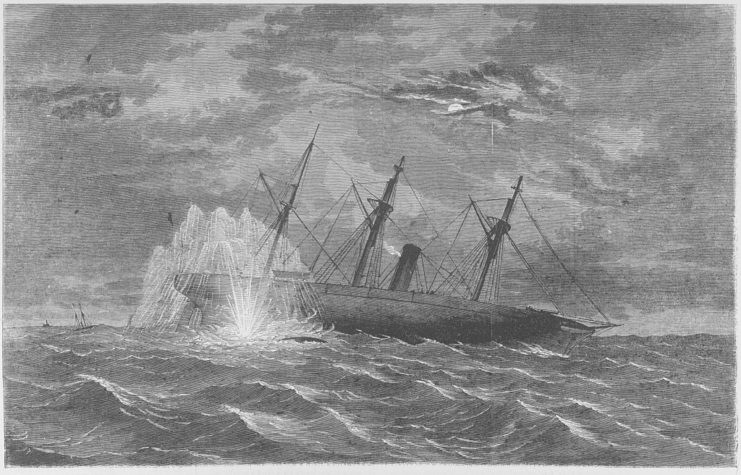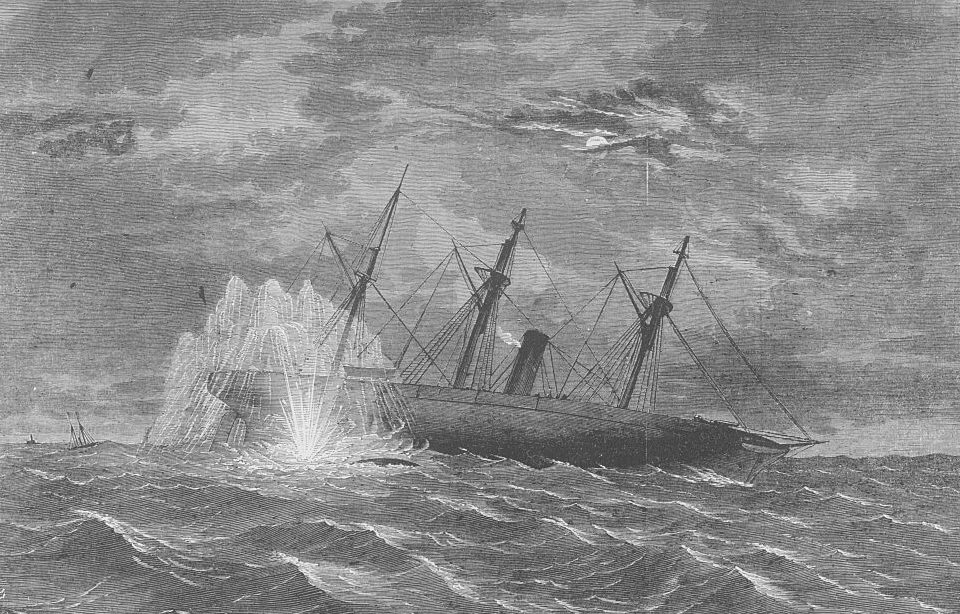The US Navy has existed longer than the country itself. The branch was established in August 1775 and re-established in 1794 during the French Revolution. The technology behind naval ships rapidly advanced in the coming years. During the American Civil War, the USS Housatonic was a marvel of marine innovation. In 1864, however, it became the first ship to be sunk in combat by a submarine.
The USS Housatonic was immediately successful
The USS Housatonic (1861) was built in Charlestown, Massachusetts and named for the Housatonic River, which flows through the state and Connecticut. She had three sister ships: the USS Adirondack (1862), Ossipee (1861) and Juniata (1862). Upon her completion, she was sent to join the South Atlantic Blockading Squadron in Charleston, South Carolina.

The first missions for the Housatonic were rousing successes. In January 1863, she took part in the capture of the USS Princess Royal, a British blockade runner loaded with supplies for the Confederate Army. The imports, which consisted of ammunition and ordnance, were later called “the war’s most important single cargo of contraband.”
The Housatonic next took part in the capture of the SS Georgiana. This action, again, prevented valuable supplies from reaching the Confederates. The Georgiana was loaded with over $1,000,000 in munitions, medicine and merchandise.
The H.L. Hunley‘s development
In the midst of the Civil War, the Confederates offered bounties of up to $50,000 to anyone who could sink a Union warship. Horace Lawson Hunley, a New Orleans-based lawyer, was up for the challenge. He developed submarine prototypes with his partners, and his third attempt caught the eye of the Confederate Army.
The submarine was built and presented to General P.G.T. Beauregard in July 1863. The Confederates were impressed.

The early results, however, were not all that promising. Five of the original crew members died during early testing when a wake washed over the top of the submarine. Four others onboard survived. A new crew was organized and Hunley himself decided to captain them. The vessel, again, sank and this time all of the crew members died, including Hunley.
Still, the submarine was raised and a mission, planned.
The attack on the Housatonic
On the evening of February 17, 1864, the Housatonic was sitting in her station in the blockade. Robert Flemming Jr., a landsman onboard, spotted an object coming toward the vessel from about 100 yards away.
The H.L. Hunley operated with a spar torpedo, “a weapon consisting of a bomb placed at the end of a long pole, or spar, and attached to a boat. The weapon is used by running the end of the spar into the enemy ship. Spar torpedoes were often equipped with a barbed spear at the end, so [they] would stick to wooden hulls. A fuse could then be used to detonate [them].”

The Housatonic and her captain, George Pickering, had little time to react. Before they knew it, the spar torpedo was on the starboard side of the ship. She rapidly began to sink, becoming the victim of the first successful submarine attack in US history.
The majority of the sailors onboard were able to escape in a lifeboat or by using broken parts of the ship as flotation devices, and were later rescued by other vessels in the blockading force. Two officers and three men died.
What really happened to the H.L. Hunley?
While the H.L. Hunley was able to accomplish her objective, the celebration didn’t last long. Stories differ as to how long it took to happen, but the submarine sunk soon after the attack, killing all eight of her crew members.
The theories behind why the submarine sank varied for many years. Some believed the USS Canandaigua (1862) may have rammed the H.L. Hunley on her way to rescue sailors from the Housatonic. Others thought one of the Housatonic‘s crew members may have gotten a shot off with a rifle.

In 2013, archaeologists discovered evidence the H.L. Hunley was less than 20 feet from the torpedo that blew through the Housatonic. The blowback from the detonation is almost certainly what damaged the submarine.
